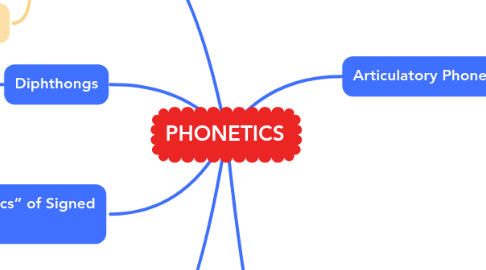PHONETICS
Door Yanira Molina


1. Tone
1.1. Low tone
1.2. Mid tone
1.3. High tone
1.4. Falling tone
1.5. Rising tone
2. Diphthongs
2.1. Sounds “squashed”
3. The “Phonetics” of Signed Languages
3.1. Major features
3.1.1. The configuration of the hand
3.1.2. The movement of the hand and arms in signing space
3.1.3. The location of the hands in signing space.
4. Major Phonetic Classes
4.1. Noncontinuants and Continuants
4.2. Obstruents and Sonorants
4.3. Consonantal Sounds
5. Articulatory Phonetics
5.1. Place of articulation
5.1.1. Bilabial
5.1.1.1. [p] [b] [m]
5.1.2. Labiodental
5.1.2.1. [f] [v]
5.1.3. Interdental
5.1.3.1. [θ] [ð]
5.1.4. Alveolar
5.1.4.1. [t] [d] [n] [s] [z] [l] [r]
5.1.5. Palatal
5.1.5.1. [ʃ] [ӡ] [ʧ] [ʤ] [j]
5.1.6. Velar
5.1.6.1. [k] [g] [ŋ]
5.1.7. Uvular
5.1.7.1. [ʀ] [q] [ɢ]
5.1.8. Glottal
5.1.8.1. [h] [Ɂ]
5.2. Manner of articulation
5.2.1. Voiced and Voiceless Sounds
5.2.2. Nasal and Oral Sounds
5.2.3. Stops
5.2.3.1. [p] [b] [m] [ŋ] [ʧ] [ʤ] [Ɂ], etc.
5.2.4. Fricatives
5.2.4.1. [f] [v] [θ] [ð] [s], etc.
5.2.5. Affricates
5.2.5.1. [ʧ] [ʤ]
5.2.6. Liquids
5.2.6.1. [l] [r]
5.2.7. Glides
5.2.7.1. [j] [w]
6. Phonetic Alphabet
6.1. Consonants
6.1.1. [p], [b], [θ], etc.
6.2. Vowels
6.2.1. [æ], [ǝ], [ɪ], etc.
